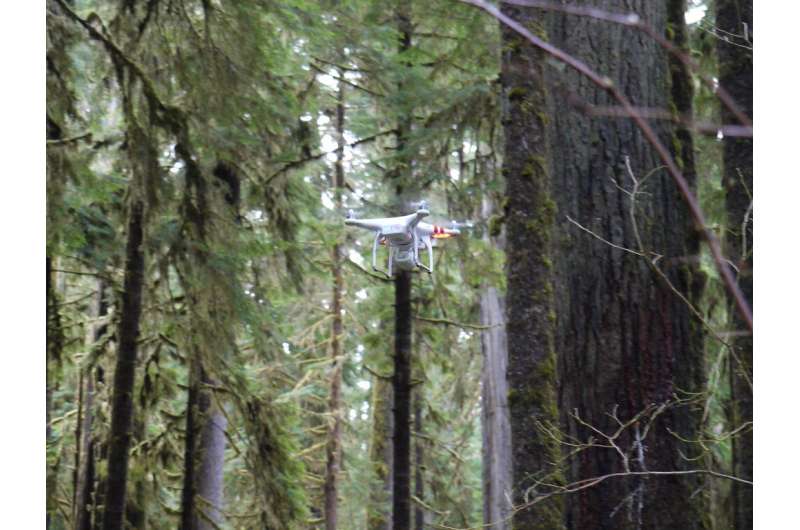This article has been reviewed according to Science X's editorial process and policies. Editors have highlighted the following attributes while ensuring the content's credibility:
fact-checked
trusted source
proofread
Multispectral drone imaging: A convenient new method to determine optimal breeding times in slash pines

Plant nutrient content reflects their overall metabolic health and has a direct impact on plant growth, development, and reproduction. Nonstructural carbohydrates (NSCs), for example, are a type of temporary storage for carbohydrates that accumulate in trees and are thought to be indicative of plant carbon availability and supply.
Nitrogen (N), a primary component of proteins, chlorophyll, nucleic acids, and vitamins, is required for photosynthesis product storage and transport. However, monitoring these nutrients in trees manually or using traditional methods takes a significant amount of time and effort. This necessitates the development of new, modern, and time-saving approaches to assist plant scientists in extracting maximum information in the shortest amount of time.
To this end, a group of researchers from China and New Zealand, including Assistant Professor Yanjie Li from the Chinese Academy of Forestry, have recently utilized artificial intelligence (AI) for the real-time monitoring of N and NSC in the leaves of pine needles. The team used unmanned aerial vehicles (UAVs) or drones to perform imaging studies on pine trees, while flying past their canopy.
By combining advanced spectroscopic analysis techniques, advanced statistics, and machine learning algorithms, this new approach can provide information about the biochemical properties, growth rate, health and development status, and genetic variations of these trees. The study was published online in the journal Plant Phenomics.
"UAV-based remote sensing is nondestructive, high throughput, and quick. It is an efficient technique for measuring plant structure and monitoring canopy physiology content in agriculture and forestry," says Associate Prof. Li, who is the corresponding author of the study.
The team had previously demonstrated the detection of tree growth parameters and vegetation indices (VIs) using UAV multispectral imagery and used this for genetic variation estimation in slash pines (Pinus elliottii). In the current study, the technique was further refined to gather information on the canopies of slash pine to help with their breeding. A total of 383 trees were monitored for 11 months in a genetically controlled forest of slash pines in China.
The drones were used to capture high-quality structural images of N and NSC in the pine leaves, which were then run through a software to screen through possible predictors and arrive at the most likely structures and genetic categories. This was then extrapolated to gather information on the monthly distribution of predicted N and NSC contents at the study site. Next, the best tree families (considered most suitable for breeding) and heritability of N and NSC content was predicted for different months.
"We obtained the highest heritability for N and NSC in the months of July and March, which could be the best time for pine breeding."
The approach could successfully gather information and helped monitor trends for a year, and is a reliable proof of concept that can pave the way for more detailed investigations and advanced technology development. Associate Prof. Li explains, "We plan on repeated assessments in the future, especially to investigate the variations in findings from drought and non-drought years."
The study not only identified tree families and clusters with high-breeding values, but also the optimal time for breeding. It is cost-effective and less resource-intensive, with enormous scalability and the ability to provide real-time information. It can provide information to plant breeders to optimally decide on the right time and choice of trees to use for artificial breeding.
Such insights coupled with long-term monitoring of natural forests and plantations could lead to significant modernization of technology used in agriculture, horticulture, forestry, and agroforestry.
More information: Xiaoyun Niu et al, Prediction of Needle Physiological Traits Using UAV Imagery for Breeding Selection of Slash Pine, Plant Phenomics (2023). DOI: 10.34133/plantphenomics.0028
Provided by NanJing Agricultural University



















